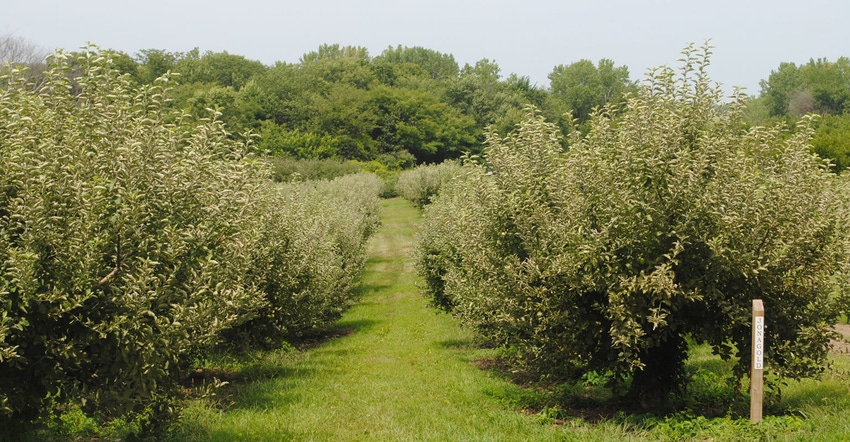September 3, 2019

It is surprising to many folks living in other parts of the country how important trees and orchards are to those of us residing on the Great Plains.
A century ago, farmers were not only likely to have a few dairy cows, sows and pigs, ewes and lambs, beef cattle, turkeys and chickens, but they also most likely had a small orchard, a big garden and a few grapevines. That was how farms and farmers remained self-sufficient and were able to feed their families from the land.
Our farm was no different. In the 1920s and 1930s, my grandparents planted more than a dozen apple and fruit trees to feed their growing family. Part of the farm labor for my dad and his siblings was not only caring for their large garden, even in the drought of the 1930s, but also caring for the orchard.
When I was in my youth, we placed a large “Apples for Sale” sign at the end of our driveway to lure locals and travelers to the farm during apple harvest. We would spend hours in the trees during the summer months, mowing, weeding and spraying trees for pests and disease.
When the late-summer apples ripened, the sign went up, and during the weekends, there often would be several visitors who came to pick apples themselves or choose a bag of apples we had picked that morning. Like selling eggs, it was a source of revenue.
However, we ate our share of apples too. We chose the very best apples for my mother and grandmother, who made pies, apple bars, apple crisp and applesauce from them. We picked windfall apples and sorted through them for more apples that could be made into pies.
The culls on the ground were fed to the chickens and hogs. Every late-summer evening after school, we often spent hours raking up fallen apples or picking and sorting apples for customers.
Those trees my grandparents planted served good duty around our place. However, they were not dwarf trees, so picking involved scampering up a tall extension ladder with a burlap bag on your back or picking into baskets in the bucket of our front-end loader. In addition to apples, we also had cherry, pear and plum trees to tend.
This wasn’t uncommon at all. I can recall Sunday drives with my parents around the county, noticing that farm families up and down the highways hung out their signs for fruit and produce they had ready to harvest.
At the time, I often cursed those apple trees, because of the amount of work they required of my brother and me. Now, that my grandparents’ trees are gone, I appreciate the value of their produce more, and I wish I had the green thumb and horse sense of my ancestors, so I could do a better job of restarting the historic orchard on our place.
You May Also Like




